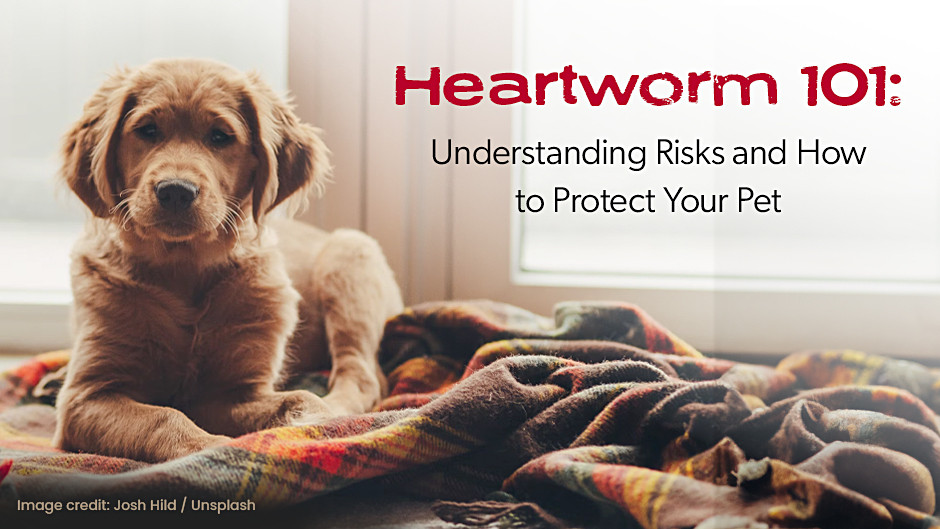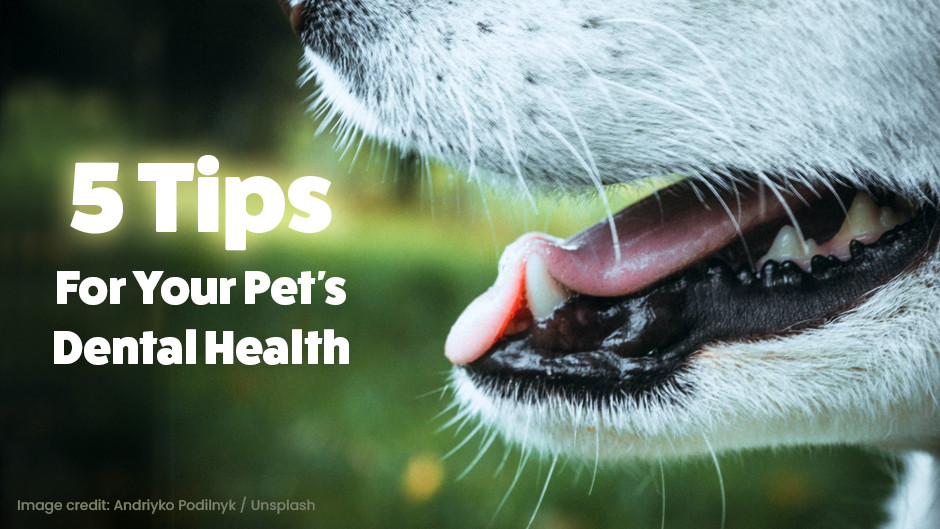Pet Health Articles
September is Senior Pet Wellness Month
2017-09-26

My friends and I like to say that we're not getting older, we're getting better. Even so, we may start to have many of the same health issues you humans have. Here are five that you especially need to keep an eye on
Much appreciated,
Carlos
Most people have heard that a pet ages seven years for every one year of a human’s life. However, the American Veterinary Medical Association states that formula isn’t exactly on target. By a dog or cat’s first birthday, he is approximately 15 years old in human years. By age two, the equivalent is approximately 24 years old. After that, aging accelerates at the rate of five years for every one year a person lives.
Regardless of the formula you use, no one can deny that pets age at an accelerated rate compared to people. They hit middle age around seven years old and the senior years after one decade of life. For this reason, we at Buffalo Companion Animal Hospital recommend that people start bringing their pets in for bi-annual preventive care exams around age seven. A lot can happen in an older pet’s life in six months.
Senior Pets and People Have Many of the Same Issues
Sadly, cats and dogs aren’t immune from common health problems that people experience more often as they get older. Some of these include:
Sadly, cats and dogs aren’t immune from common health problems that people experience more often as they get older. Some of these include:
Arthritis: Arthritis is a painful condition that occurs when the cartilage present in bones wears away and causes them to rub together. Your pet can experience pain and inflammation without the natural cushioning of the cartilage. Since she can’t tell you this, look for a reluctance to jump, stiff walking gait, loud meowing or howling when you pick her up, and the tendency to favor some limbs over others.
Cancer: According to several veterinary organizations, dogs and cats over age 10 succumb to cancer more than any other disease. Leukemia is most common in cats and mast cell tumor is most common in dogs. Some of the first indications of potential cancer in your pet include changes in behavior, fatigue, weight loss, and wounds that seem slow to heal.
Cognitive decline: Approximately 50 percent of all dogs and cats show at least mild cognitive decline in the senior years. Your normally docile pet may become aggressive or a typically confident dog or cat could become anxious and not want to leave your side. Skill regression is also common.
Diabetes: The increase in obese and inactive pets has caused more of them to develop diabetes. However, it can also occur due to genetic inheritance, normal aging, and other risk factors. Your pet with diabetes will urinate more frequently, lose weight, appear irritable and fatigued, and possibly display vision problems.
Kidney disease: Healthy kidneys enable your dog or cat to eliminate waste properly. Kidney dysfunction can cause waste products to remain trapped in the body, causing pain, weight loss, vomiting, inability to hold urine or feces, and increased thirst.
Dogs and Cats Are Masters at Hiding Pain
The need to never appear weak to potential predators is hardwired into dogs and cats. This causes them to hide when they feel pain rather than express it. It’s up to you to look for signs of declining health in your older pet and seek the appropriate treatment. Feel free to contact us with questions or to schedule a senior wellness exam.
The need to never appear weak to potential predators is hardwired into dogs and cats. This causes them to hide when they feel pain rather than express it. It’s up to you to look for signs of declining health in your older pet and seek the appropriate treatment. Feel free to contact us with questions or to schedule a senior wellness exam.
Photo Credit: BigRedCurlyGuy / Getty Images






